Looking to explore the monuments in Peru? From the peaks of the Andes to the mystical deserts, Peru is a land where history breathes. Here, ancient empires left an indelible mark. The monuments of this extraordinary nation offer a profound journey through time, where the legacies of Inca royalty, enigmatic pre-Columbian cultures, and Spanish colonial grandeur intertwine. This blog will guide you through some of the significant monuments in Peru, showcasing the incredible range of its historical legacy, inviting you to step back in time.
10 Popular Monuments In Peru
This list of top historical monuments in Peru, its ancient Incan citadels to grand colonial architecture. Admire the natural beauty of these places.
1. Machu Picchu (Cusco Region)
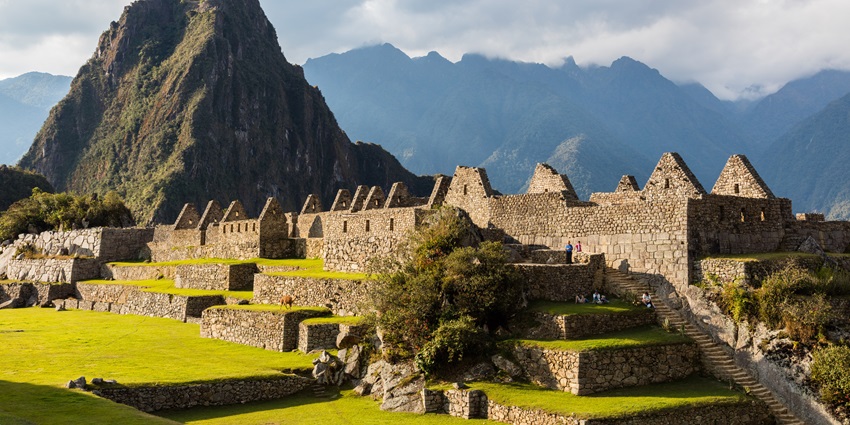
Photo: Diego Delso / Wikimedia Commons
Located in the Andes Mountains of Peru, Machu Picchu is the awe-inspiring 15th-century Inca citadel. Also known as the “Lost City of the Incas,” this UNESCO World Heritage site is a testament to the Inca Empire’s unparalleled engineering prowess. It features precisely cut, mortar-less stone walls that have witnessed centuries of earthquakes. Its intricately designed temples and vast agricultural terraces cascading down steep mountainsides give you a vivid glimpse into its sophisticated urban planning and spiritual cosmology of its builders. Machu Picchu is the most popular monument in Peru and a global icon you must visit.
Nearest Airport: Alejandro Velasco Astete International Airport (CUZ) in Cusco.
Distance From Airport: 76 km
Best Time To Visit: May to October
Modes Of Transport: Train from Cusco or Ollantaytambo to Aguas Calientes, shuttle bus.
2. Sacsayhuaman (Cusco)
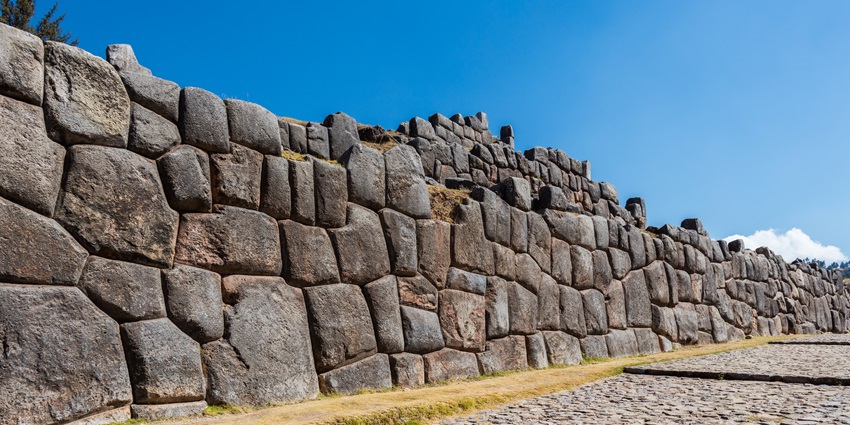
Photo: Diego Delso / Wikimedia Commons
Overlooking the city of Cusco, Sacsayhuaman is a massive Inca ceremonial fortress, making it one of the most imposing and popular monuments in Peru. This imposing site showcases the Incas’ mastery of dry-stone masonry, with colossal, precisely cut boulders fitted together with astounding accuracy, without the use of mortar. The zigzagging, multi-tiered walls are its most iconic feature, believed by some to represent the teeth of a puma, a sacred animal to the Incas, with Cusco itself being laid out in the shape of a puma.
Nearest Airport: Alejandro Velasco Astete International Airport (CUZ) in Cusco.
Distance From Airport: 7.8 km
Best Time To Visit: May to October.
Modes Of Transport: Taxi, local bus from Cusco.
3. Ollantaytambo (Sacred Valley)
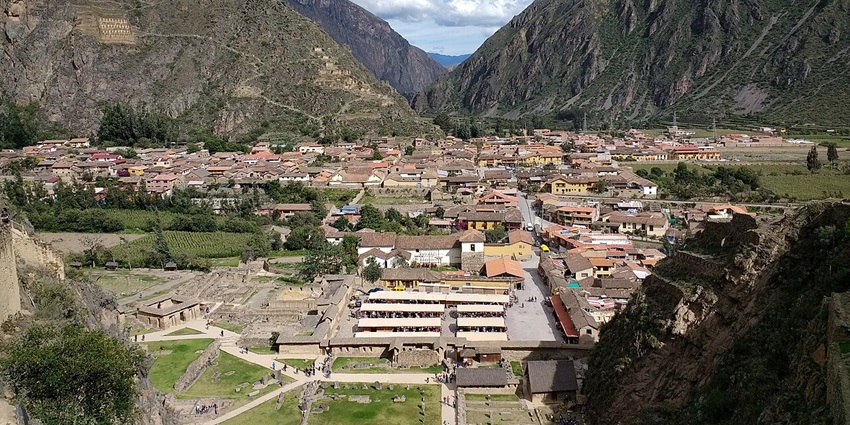
Photo: Mx._Granger / Wikimedia Commons
More than just a ruin, Ollantaytambo is a living Inca town and a formidable fortress. It is one of the best-preserved examples of Inca urban planning and military architecture in the Sacred Valley. The original Inca streets, water channels, and walls are still in use. Ollantaytambo is the site of one of the few major Inca victories against the Spanish conquistadors. Spending time here allows visitors to explore the impressive ruins, wander through the charming, well-preserved Inca town, and soak in the breathtaking Andean scenery.
Nearest Airport: Alejandro Velasco Astete International Airport (CUZ) in Cusco.
Distance From Airport: 79.9 km
Best Time To Visit: May to October.
Modes Of Transport: Collectivo (shared van), taxi, or tour bus from Cusco or Urubamba.
4. Qorikancha / Coricancha (Cusco)
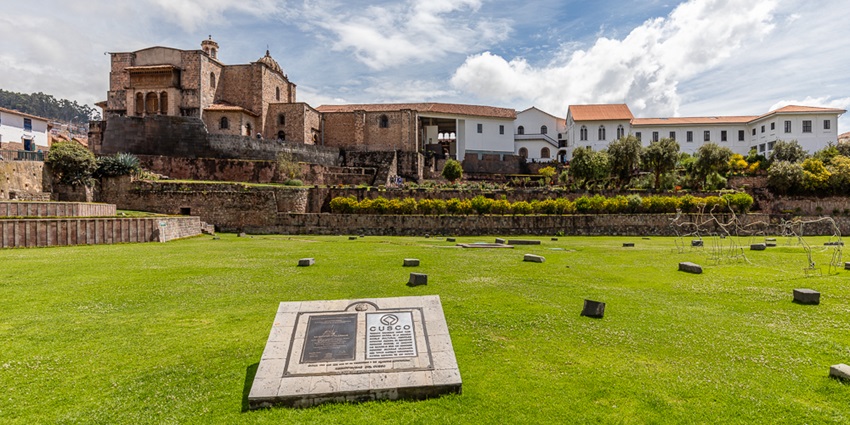
Photo: Julia Sumangil / Wikimedia Commons
Qorikancha (Coricancha), meaning “Golden Enclosure” or “Golden Temple” in Quechua, was the most sacred and revered temple in the entire Inca Empire, dedicated to Inti, the Sun God. The Spanish conquistadors, in a powerful act of cultural dominance, built the Convent of Santo Domingo directly on top of Qorikancha’s remarkably sturdy Inca foundations. It is one of the popular monuments in Peru. These two architectural styles are juxtaposed, with the elegant, curved Inca walls forming the base, surmounted by the colonial church and convent. Today, you can explore this cultural symbol and walk through layers of Peruvian history.
Nearest Airport: Alejandro Velasco Astete International Airport (CUZ) in Cusco.
Distance From Airport: 5.4 km
Best Time To Visit: May to September
Modes Of Transport: Taxis, walking.
5. Chan Chan (Trujillo, La Libertad Region)
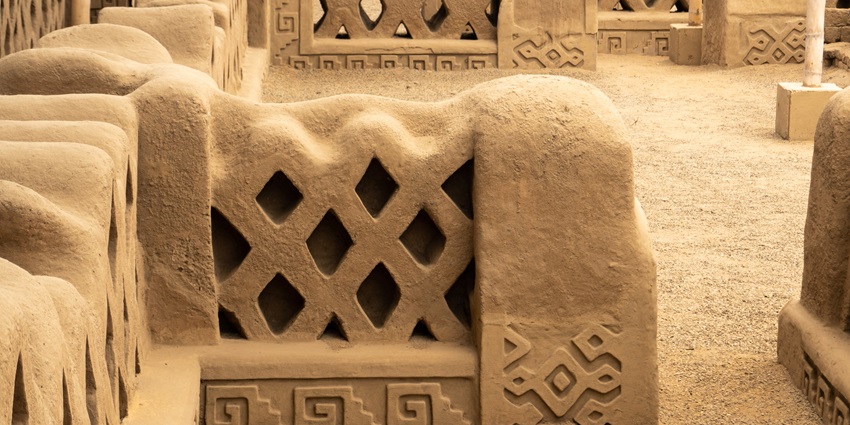
Photo: PsamatheM / Wikimedia Commons
As the largest mud-brick city in the Americas and a UNESCO World Heritage site, Chan Chan was the sprawling capital of the Chimú Kingdom, a powerful pre-Inca civilisation on Peru’s northern coast. It covers around 20 square kilometres and features immense walled compounds known as “ciudadelas.” These served as royal palaces, administrative centres, and burial sites, adorned with intricate adobe friezes depicting marine life and geometric patterns, reflecting the Chimú’s deep connection to the ocean. Chan Chan is one of the significant historical monuments in Peru. Though time and climate have taken their toll, some sections are restored, making the monument a must-visit.
Nearest Airport: Capitán FAP Carlos Martínez de Pinillos International Airport (TRU), Trujillo.
Distance From Airport: 6.3 km
Best Time To Visit: April to November
Modes Of Transport: Taxi, local bus, or tour bus from Trujillo.
6. Nazca Lines (Nazca, Ica Region)

Photo: Diego Delso / Wikimedia Commons
Etched into the arid desert floor of southern Peru, the Nazca Lines are one of the world’s most captivating archaeological mysteries. They are enigmatic geoglyphs depicting animals, plants, and geometric shapes. Spanning an area of over 450 square kilometres, the lines were formed by simply removing the reddish-brown surface pebbles to expose the lighter-colored earth beneath. Yet, their massive scale means they are best appreciated from an aerial perspective. The Nazca Lines are a UNESCO World Heritage site, which makes them one of the most popular Monuments in Peru.
Nearest Airport: Maria Reiche Neuman Airport (NZC) in Nazca
Distance From Airport: 8.5 km
Best Time To Visit: Year-round.
Modes Of Transport: Flights, taxis, and long-distance buses.
7. Caral-Supe (Supe Valley, Lima Region)
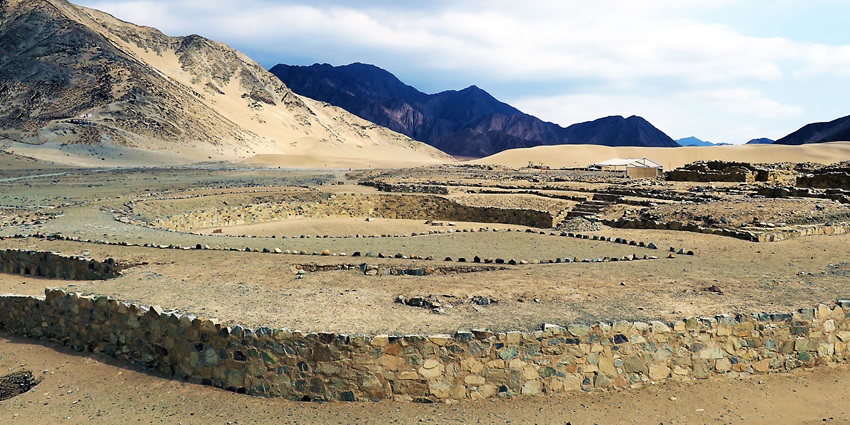
Photo: AlisonRuthHughes / Wikimedia Commons
Hidden north of Lima, Caral-Supe represents the oldest known civilisation in the Americas, dating back an astonishing 5,000 years. This UNESCO World Heritage site was flourishing at the same time as the first pyramids were being built in Egypt and cities were rising in Mesopotamia. It shows that a complex society with large buildings, well-planned cities, and an organised social system developed on its own, even before ceramics or metal tools were widely used in the area.
Nearest Airport: Jorge Chávez International Airport (LIM) in Lima.
Distance From Airport: 183.3 km
Best Time To Visit: May to October
Modes Of Transport: Private car/taxi or organised tour from Lima.
8. Kuelap (Amazonas Region)
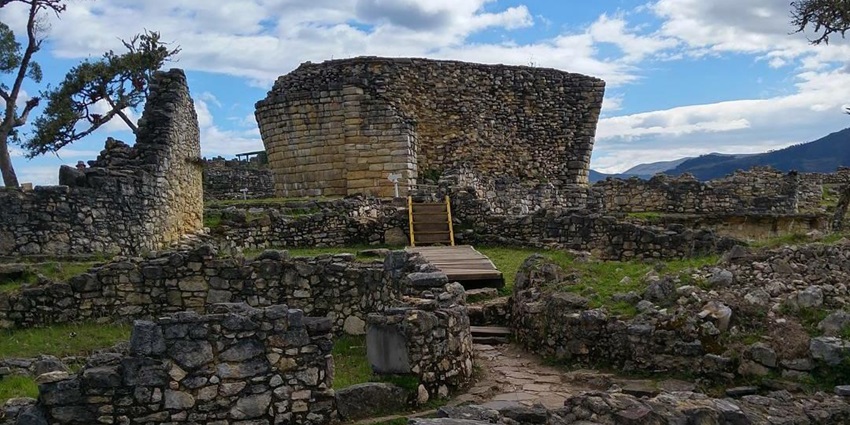
Photo: Luis Cristhian Chu Alvarez / Wikimedia Commons
Kuelap is a monumental walled city located high in the cloud forests of Peru’s Amazonas region and therefore called the “Machu Picchu of the North.” This pre-Inca fortress was built by the mysterious Chachapoyas culture, also known as the “Warriors of the Clouds.” It is awe-inspiring due to its ancient engineering and defensive architecture. While once remote and challenging to access, the introduction of a modern cable car system has made the journey much easier. This site is easily accessible to explore Peru’s diverse pre-Inca history on your next trip
Nearest Airport: Chachapoyas Airport (CHH) for domestic flights or Jaén Airport (JAE).
Distance From Airport: 110.9 km from Chachapoyas Airport, 252.2 km from Jaén Airport
Best Time To Visit: May to October
Modes Of Transport: Collectivo or tour bus from Chachapoyas, cable car.
9. Huaca Pucllana (Lima)
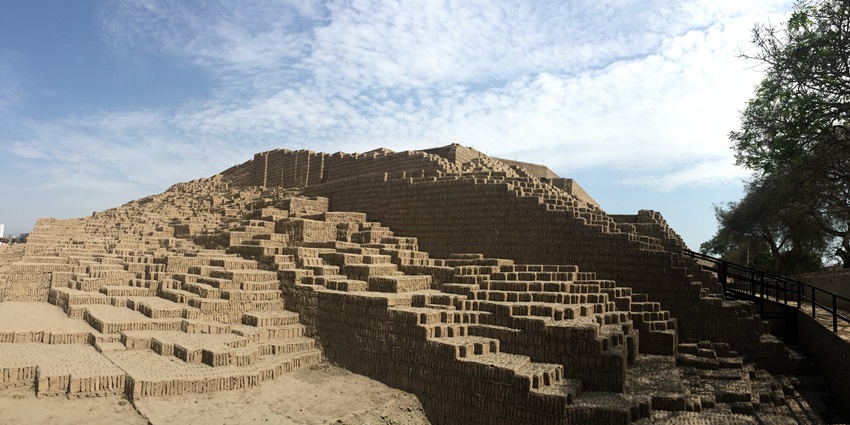
Photo: Paulo JC Nogueira / Wikimedia Commons
Huaca Pucllana is a large adobe and clay pyramid located within the modern Miraflores district of Lima. Built by the Lima Culture (pre-Inca), it offers a fascinating glimpse into the city’s ancient past. You can explore the excavated sections of the pyramid and surrounding plazas through guided tours, learning about the Lima culture’s rituals, beliefs, and daily life, including evidence of offerings. At night, the site is beautifully illuminated, providing a magical backdrop for dinner at the on-site restaurant.
Nearest Airport: Jorge Chávez International Airport (LIM) in Lima.
Distance From Airport: 21.3 km
Best Time To Visit: April to November
Modes Of Transport: Taxi, ride-hailing apps (Uber, Cabify).
10. Plaza De Armas (Lima) & Government Palace (Lima)

Photo: Felipe Restrpo Acosta / Wikimedia Commons
The Plaza de Armas, also known as Plaza Mayor, is the historical heart of Lima and the very spot where Francisco Pizarro founded the “City of Kings”. This grand square has served as a market, a bullring, and even a place of public executions during colonial times, before becoming the site where Peru’s independence was proclaimed. It is surrounded by grand colonial buildings, including the imposing Government Palace, the official residence of Peru’s President and the seat of its Executive Power. This square is a national monument in Peru, representing the nation’s capital and its journey to independence.
Nearest Airport: Jorge Chávez International Airport (LIM) in Lima.
Distance From Airport: 12.5 km
Best Time To Visit: May to October
Modes Of Transport: Taxi, ride-hailing apps, or public transport.
These monuments in Peru are remarkable feats of engineering or artistic expression. They have witnessed empires rise and fall, yet proudly carry the nation’s heritage into the future. As you walk among the colossal stones of Machu Picchu, feel the ancient dust of Chan Chan beneath your feet, or stand in the majestic Plaza de Armas in Lima. Check out packages offered by TripXL and hear whispered tales of enduring greatness.
Cover Photo: Protontorniyo / Wikimedia Commons


 WhatsApp
WhatsApp
 Twitter
Twitter









